How To Take Base Line Readings Ahead Of A Paranormal Investigation
This article is more than one year old and was last updated in February 2024.
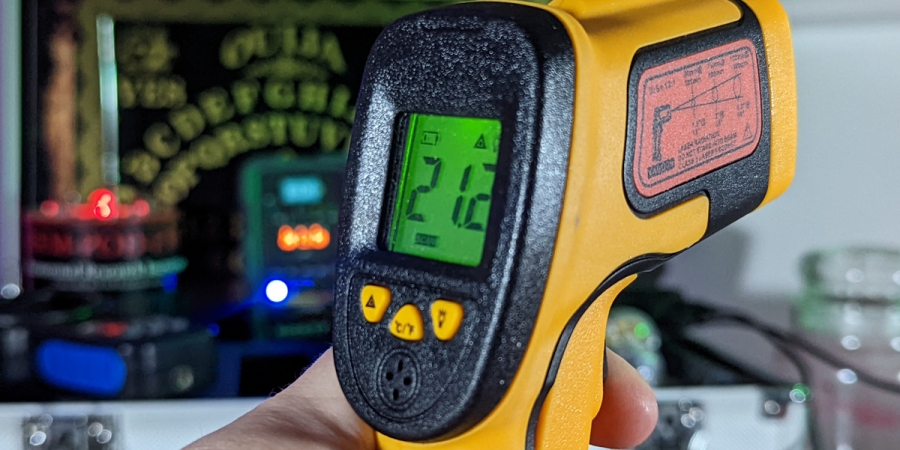
The human body is fairly good at detecting drops in temperature, so it's easy to say that you've suddenly felt a cold spot during a paranormal investigation, but in order to really understand whether this and other environmental anomalies are paranormal or not relies on you collecting solid base line readings of the property before the investigation.
Unfortunately, taking base line measurements doesn't mean merely doing a complete walk-through of the property 20 minutes before a ghost hunt with an EMF meter. To really understand the base line environmental conditions and the way they naturally fluctuate in a building you are investigating requires planning and a lot more effort.
The problem with collecting base line readings at an allegedly haunted location is knowing what the "normal" conditions are. If you believe that a haunting can produce cold spots, spikes in electromagnetism, infrasound and other atmospheric anomalies, how can you ever know that the paranormal activity has subsided to such a low level that you can get a clean base line measurement? The truth is, you can't. But by collecting as much data and measurements as you can will allow you to establish the average conditions at a location.
Ideally, base line measurements should be taken over weeks, at the very least one whole day. Below are a list of factors you might consider measuring as part of your base line test. You don't need to measure all of these, but you should cover off any that you think you might need to refer back to in order to compare an anomalous or significant change during your investigation.
Temperature & Humidity
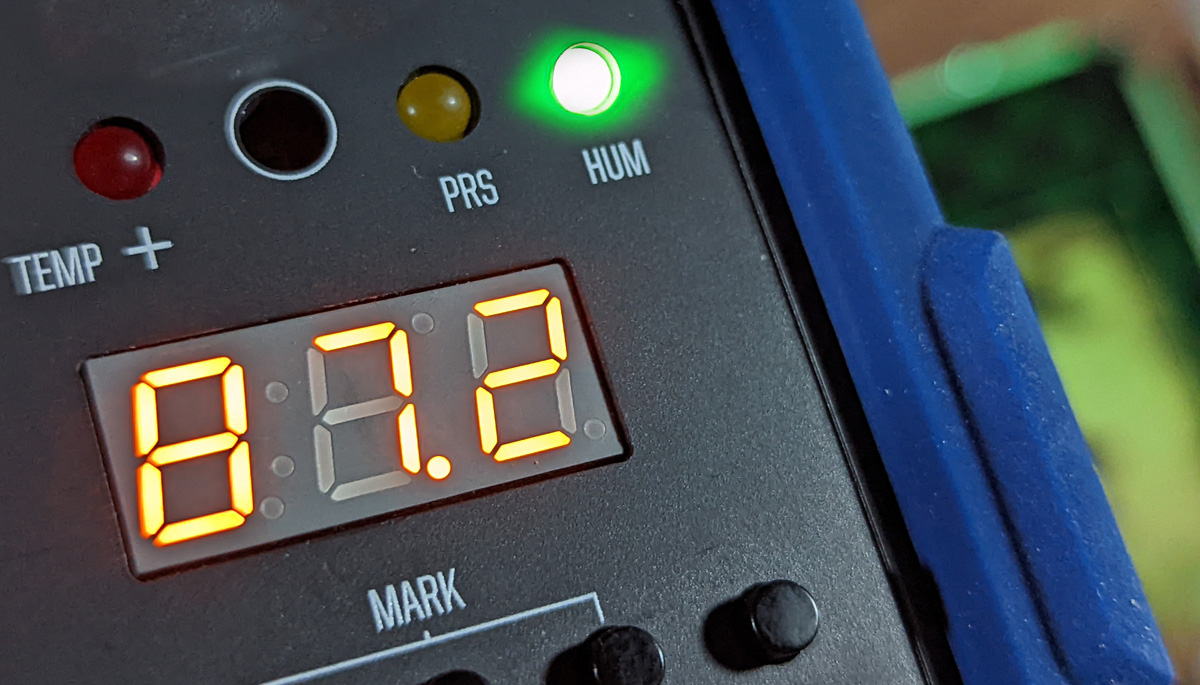
The indoor temperature and humidity are often measured together and the best practices related to collecting base line readings for these two measurements are pretty similar.
Over a 24 hour period the temperature and humidity inside a building will naturally cycle depending on the time of day, what time the heating or air conditioning turns on or off, and based on the number of people in the building at any one time.
This can be determined to some extent over a 24-hour period, but automated heating and cooling schedules might vary over a seven day period, buildings may be quieter at weekends than weekdays, and of course the weather outside will to some extent affect the conditions inside the building.
Therefore, it's best to collect temperature and humidity readings inside and outside the building on regular intervals throughout the day for at least a week. This doesn't necessarily mean walking around the building manually collecting the readings. In fact in terms of consistency it's better not to do it manually.
Devices like the SensorPush Wireless Thermometer and Hygrometer can be left indoors or outdoors at a location where they will log the temperature and humidity once per minute and store that data for a 30 day period. The data can then be downloaded to a smart phone and even exported to a spreadsheet. There's also a Ghost Hunting Data Logger available, which is designed specifically for paranormal investigations.
This data will allow you to determine the normal daily average temperature range in the building, the lowest recorded temperature and the peak temperature. Of course, this still doesn't give you the full picture as the conditions outside the building will vary drastically between seasons, but by logging the outside temperature as well you should be able to workout the differential between the indoor and outdoor air temperatures.
If you don't have the ability to log the temperature in this way, then you may have no choice but to collect it manually. You should still aim to do this over as large a timeframe as you can and take several readings per day.
To ensure consistency and accuracy when collecting the readings don't use ghost hunting tools. Even some of the most commonly used ghost hunting gadgets with humidity and temperature detection built in are slow to react to changes in environmental conditions and are often inaccurate.
It's better to use a Digital Hygrometer Thermometer. Not only is this a much cheaper option, with a pack of five costing a fraction of one ghost hunting device, they're also much more accurate. Having a few of these means you can leave them in positions around the location, and they'll already be properly adapted to the humidity and temperature when you walk around to take a measurement.
A less preferable option is to use a point-and-click infrared temperature gun, they can be very accurate but only when used in the right way.
To start with you need to be consistent when taking readings, you can't just randomly point it into the room and press the trigger. You'll need to have a designated target in each room that you use each time. The best way to mark this is with a piece of matt black tape stuck to the wall. The tape will give you a point to target the laser at, but because temperature guns can give varying readings on surfaces of differing reflectiveness, the matt tape will help keep things consistent. Being black, the tape also absorbs heat from the surface enabling it to match the temperature of the surface more quickly.
The other thing to be aware of is the temperature gun's field of view. Most commercially available infrared thermometers have a distance-to-sight ratio of 12:1, which means that if you are holding the gun 6cm from the surface the area that gun is measuring is a circle 0.5cm in diameter. Therefore, hold the temperature gun at the 5-6cm mark each time in order to ensure consistent readings.
You should also use the laser pointer mode to target the gun so that you know you are taking a measurement of the tape marker and always face the surface head on rather than taking the reading from an angle. Because results still may vary with this method due to the movement of your hand and slight changes in the distance between the gun and the target, take three measurements each time and calculate an average.
Advertisement ‐ Content Continues Below.
Wind & Draughts
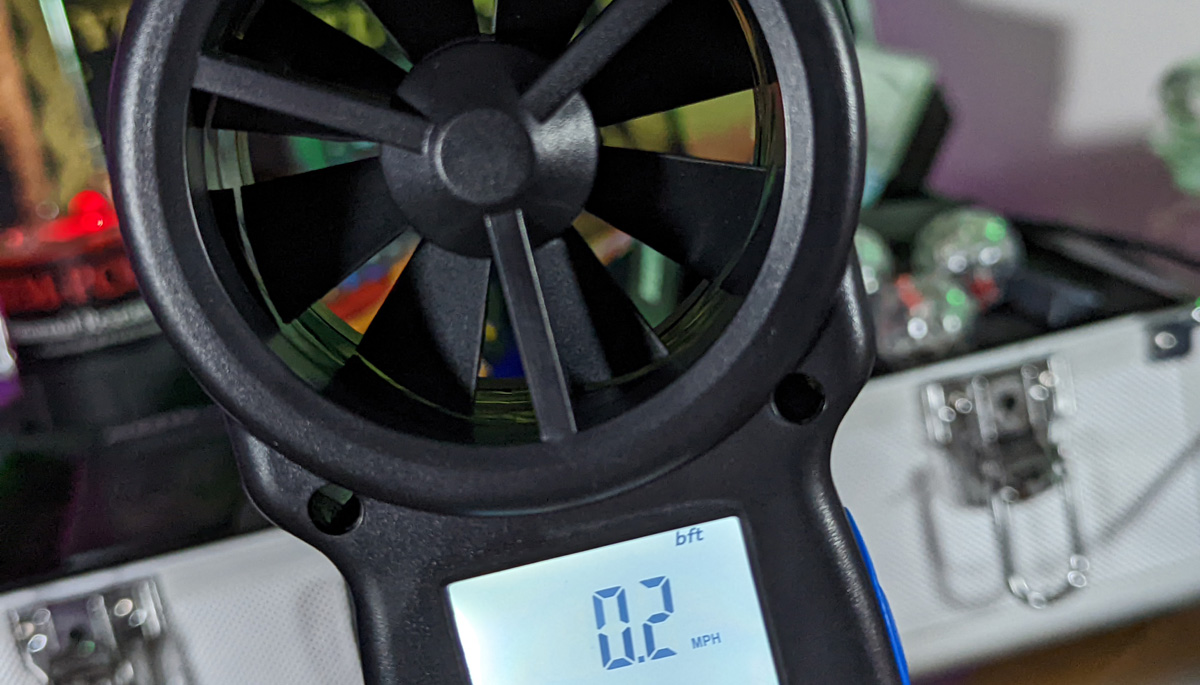
Air movement is a little easier to deal with than temperature. Your best option is to try to eliminate draughts all together by closing doors and windows, and taping over any obvious gaps that might produce a breeze. If this isn't possible, then you might need to establish a base line.
Even with draughts completely eliminated, you still need to be aware of outside wind speeds as this may caused banging, whistling sounds, and rattling windows and doors.
You can use a relatively inexpensive handheld device called an anemometer to measure wind speed and direction outside the property, as well as draughts inside. Less measurements are required with wind, but like temperature and humidity, you're not going to be able to do this in one visit to the property.
When it comes to draughts, there's less seasonal variation than with temperature. The two key factors to consider are wind direction and wind speed. Obviously the stronger the wind outside, the more likely draughts are inside. So taking measurements on a windy day will give you a good idea of the likelihood of draughts during your investigation, but wind direction will affect this significantly, so ideally you need to measure external winds and internal draughts on different very windy days when the wind is blowing from different directions.
The problem is, you might not get the chance to measure wind speed on days when the wind blows from every direction, and even if you check for draughts on what you might consider to be a windy day, unless you took your measurements during gale-force winds, there's always the chance the wind outside might be stronger during your investigation, so this should be accounted for.
Air currents can also be produced by changes in air pressure caused by air conditioning, central heating or any other source of heat such as electrical equipment or human bodies in a room. As the air heats up it expands, this can cause it to be pushed through to a cooler area of lower pressure.
For example, if the lower floor of an allegedly haunted house is heated to a higher temperature than the upper floor, then you may find that there is a flow of air travelling up the stairs. All this air moving around may not be strong enough for you to feel, but it could be powerful enough to slam a door closed.
Electromagnetism

The best way to check for normal electromagnetic conditions is to do multiple sweeps of the building and look for hotspots and mark them off on a floor plan. These EM hotspots could be caused by countless electronic equipment from wires embedded in the walls, to security and fire protection systems, WiFi, mobile phones and pretty much any other electrical appliance.
The reason you'll need to sweep the building more than once is because you can't know for sure that everything that might be a source of EM will be turned on at the time you conduct your sweep. Over the space of several hours, days or weeks it's your task to find every possible source.
You should take in to account whether the heating and air conditioning is on and off, if the building is in use, how many people are inside, and which lights, appliances and parts of the building's infrastructure are in use. By the time you conduct your investigation you should have a complete floor plan with all possible EM hotspots mapped. This means if a spike occurs during your investigation you can check if it's happened in this area before.
Be aware that these spikes could also be the result of something being moved or entering a different mode of operation. It could also be caused by a thunderstorm, which can cause the electric field indoors to fluctuate strongly.
Since you are essentially looking for anomalous readings and comparing it to your base line, you should use the same type of EMF meter during the sweep as you do during the investigation, do not compare results across different devices as they may have a different accuracy or sensitivity.
The best device to record EM levels is a TriField Meter or a Multi-Field Meter, rather than something sold purely as a ghost hunting tool, like a cheap K-II Meter. These more robust devices will give you far greater accuracy and even help you determine what the source of the EM is. Remember that an EMF meter isn't a "ghost detector" or method of communication.
Light Levels

Like draughts, the easiest way to deal with light levels at a location is to eliminate changes as much as possible. You can do this by blacking out windows, closing curtains and blinds and keeping internal doors closed. This doesn't mean you need to investigate in the dark, but make a note of which lights are switched on and keep the conditions the same.
You can measure and log light variations using a Digital Illuminance Light Meter. Again, another useful tool which is actually cheaper than most purpose-built ghost hunting equipment.
Background Noise
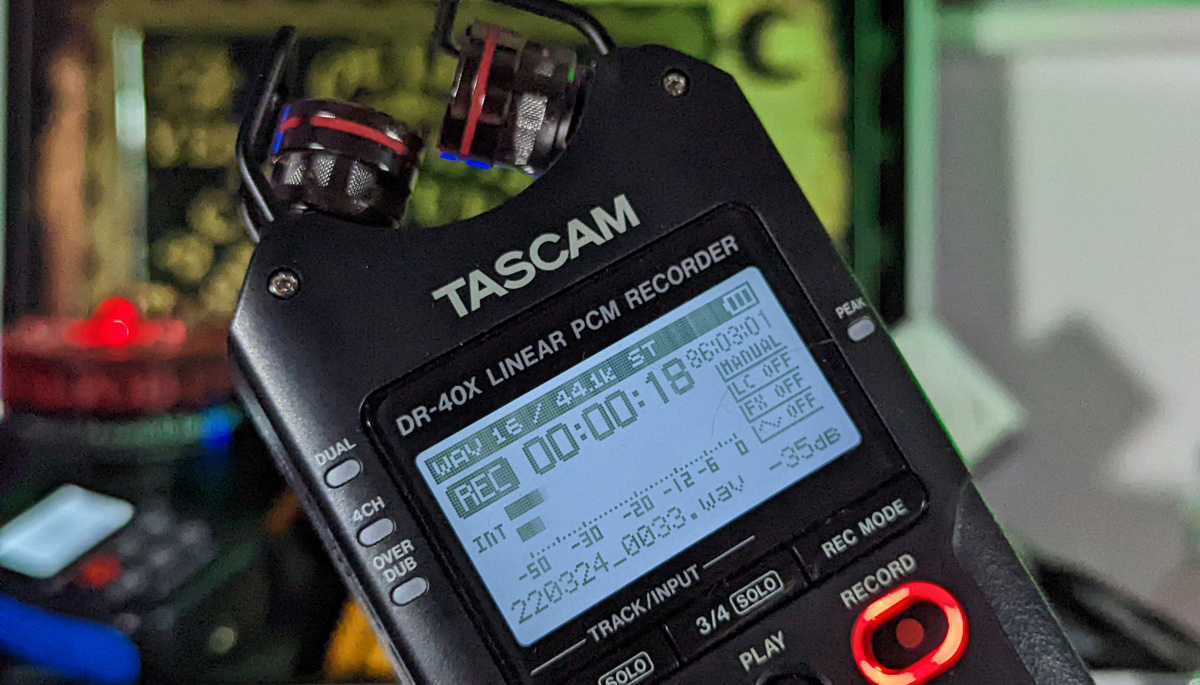
As with temperature, sound levels in a building can depend on the time of day and how many people are there at the time. Using a Sound Level Meter will let you determine the level of background noise, however the level is just part of the story.
You might also want to use an audio recorder to make five or ten minute recordings in various parts of the property at different times over a day or week, ideally at a time when the building is empty and not in use. This will give you a chance of capturing any unusual sounds that might occur naturally in the building. This recording may not help you identify the source of the sound, but if you hear similar sounds during your investigation then you'll know that this is less likely to be a paranormal sound.
You should also try to account for sounds coming from outside the building. There are countless causes for external noise, some are harder to identify and predict than others. The causes can include passing pedestrians, traffic, trains and aircraft, and even the local wildlife. All these things can introduce unexplained sounds into your investigation.
Infrasound
Infrasound is a very low frequency sound that is below the human range of hearing and it is said to cause people to report discomfort in the form of disorientation, feeling panicked, an increased heart rate and blood pressure. In extreme cases infrasound has been attributed to feelings of depression, a general feeling of unease, as well as visions like apparitions. All these are of course symptoms of a haunting.
The effects were discovered by scientists researching the low frequency noise created by wind turbines and traffic noise. They also found links between infrasound and the sensations described as getting chills down the spine.
As specialist audio equipment is required to detect infrasound, it can be hard to obtain base line measurements, the source of these sounds can also be hard to pinpoint as external low hums and rumbles could travel to the property from many miles away.
A better approach is to try to eliminate infrasound from your investigation by keeping doors and windows closed and by turning off any nearby machinery, even fans can produce the low frequencies associated with infrasound, another reason why care should be taken to turn off any electrical equipment which could interfere with your investigation.
Seismic & Vibration
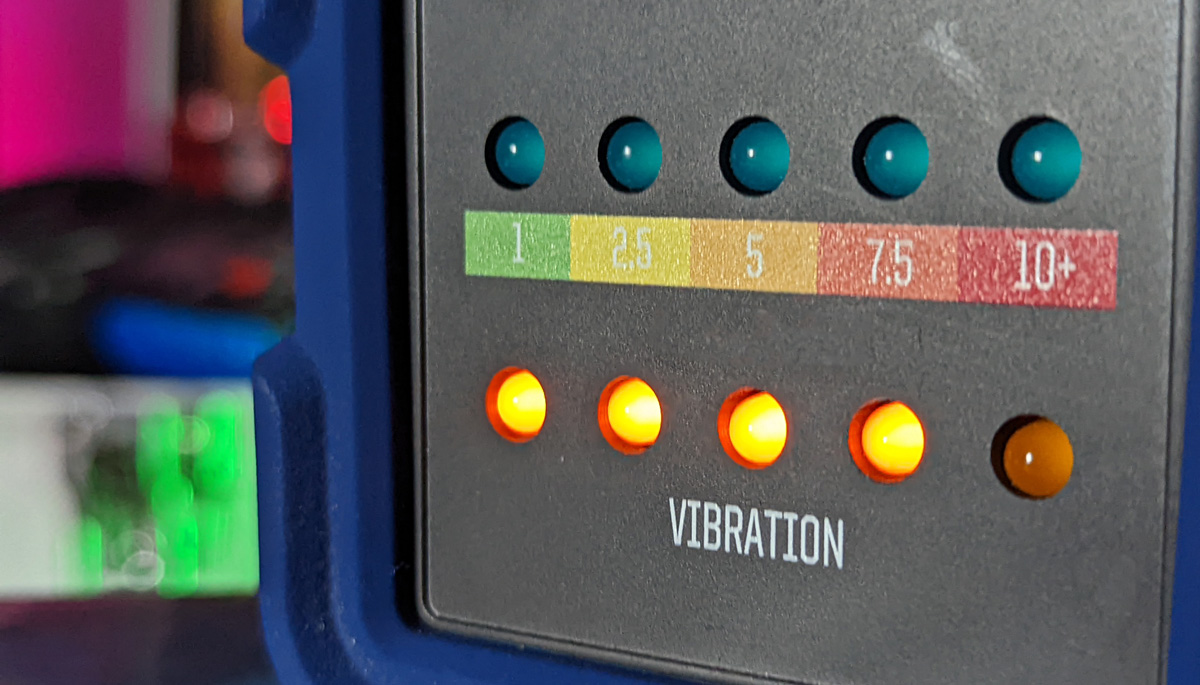
In rare cases earthquakes, tremors and extreme weather may cause vibrations within a property. Vibration may also be cause by passing traffic especially heavy plant, road works, construction sites nearby, and underground services such as metro networks. The sound of neighbours moving around their house may also affect your results, especially if investigating an attached house or an individual room or floor in a shared building.
Getting a base line of seismic and vibration activity is also very difficult and requires expensive equipment. It is possible to get a purpose-built vibrations sensors for the paranormal field called a Geophone. These are relatively inexpensive and are often built into other devices like the common EDI+ multi-meter.
Geophones might be the best low-cost option, but they're not ideal. Most of these devices simply alert you to vibration by flashing an indicator light, they don't give you any useful data such as the intensity of the vibration or its frequency.
Related Content
Daily Horoscopes
You May Also Like
























